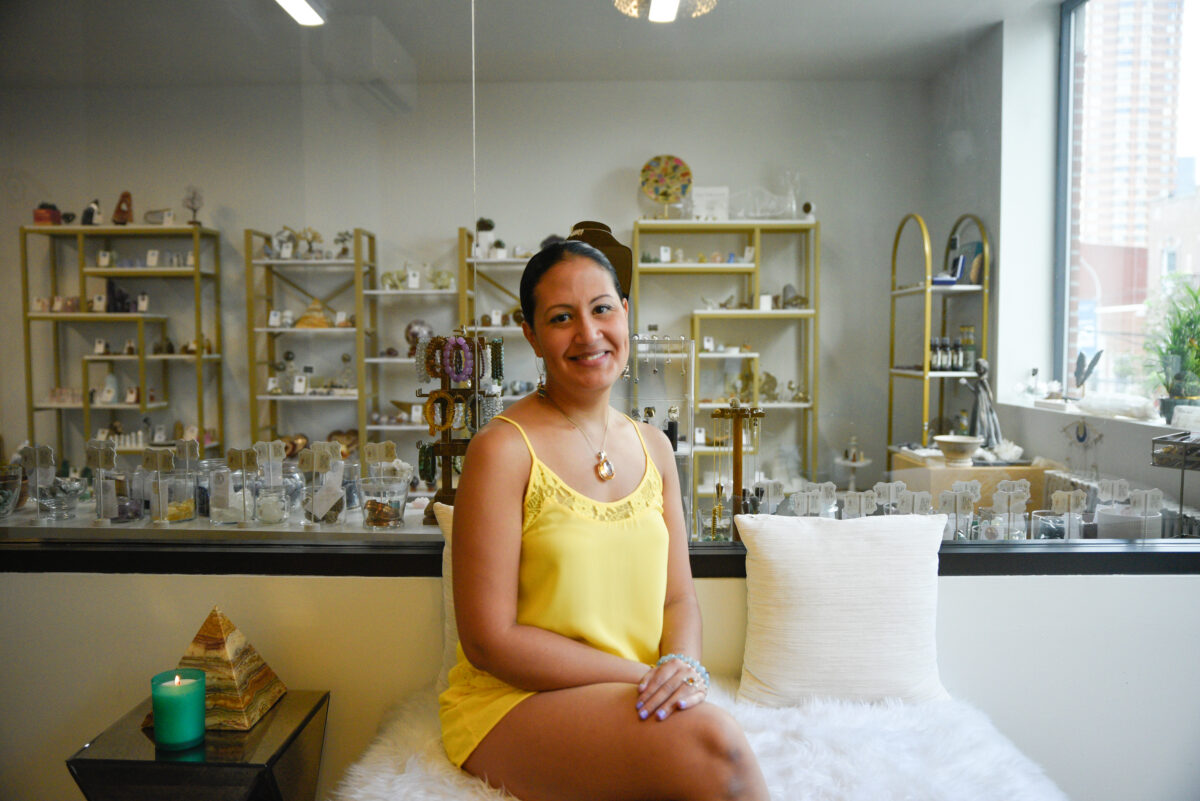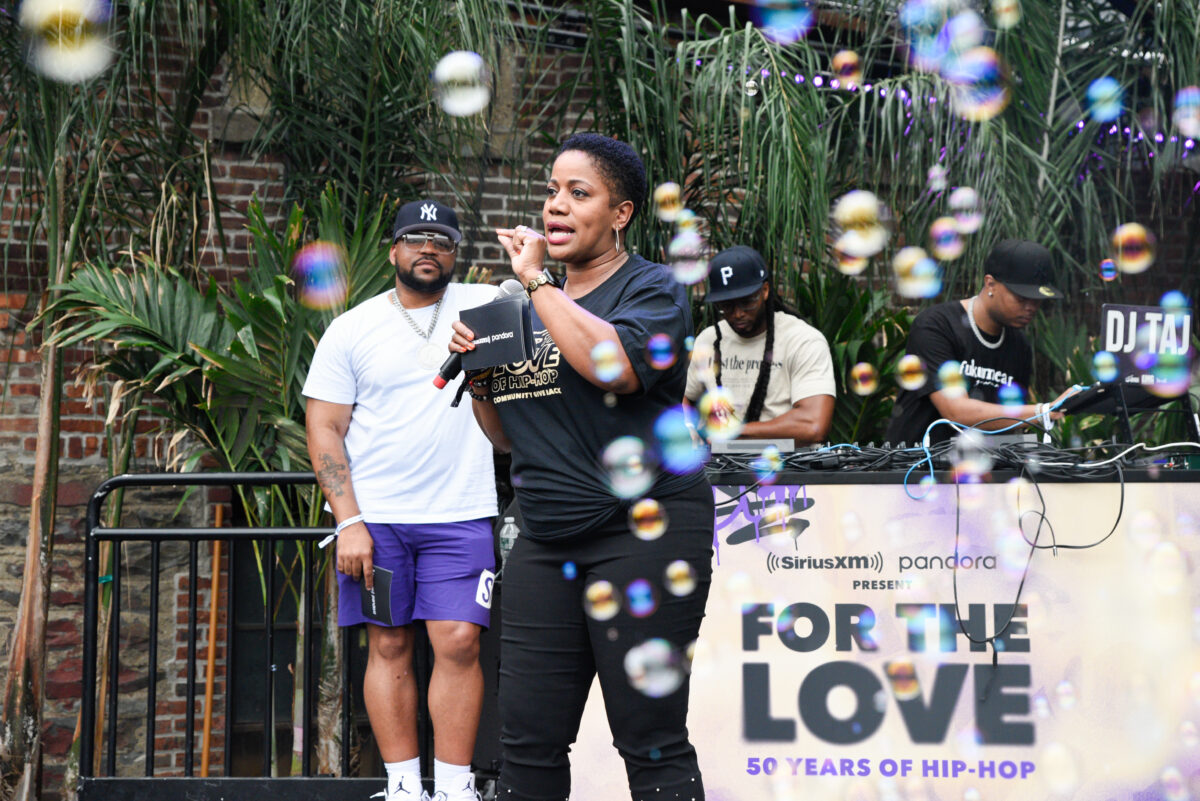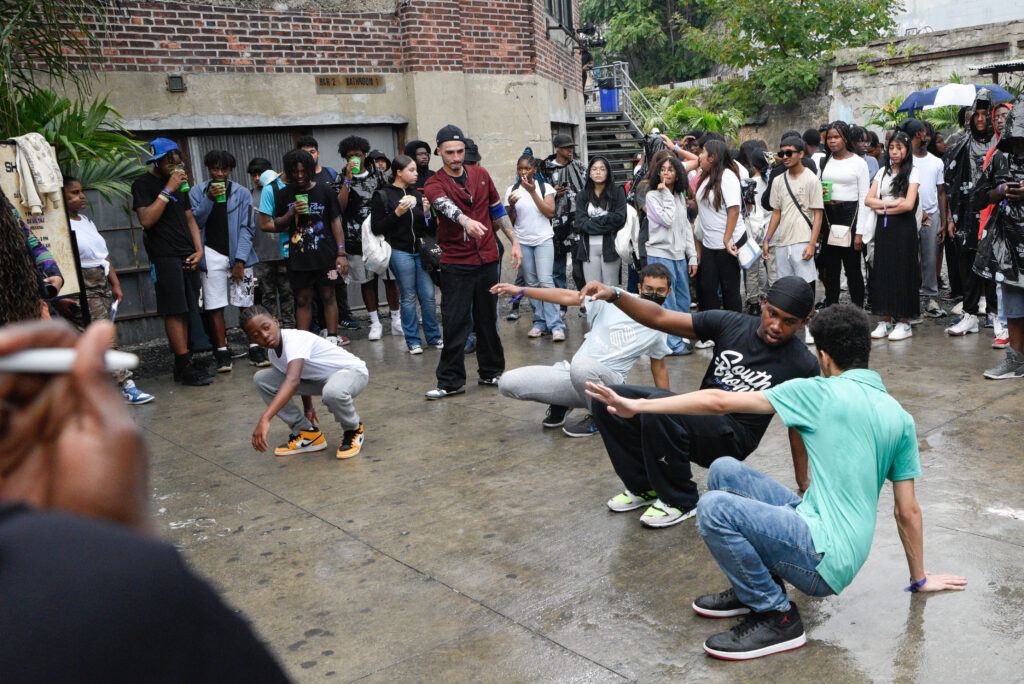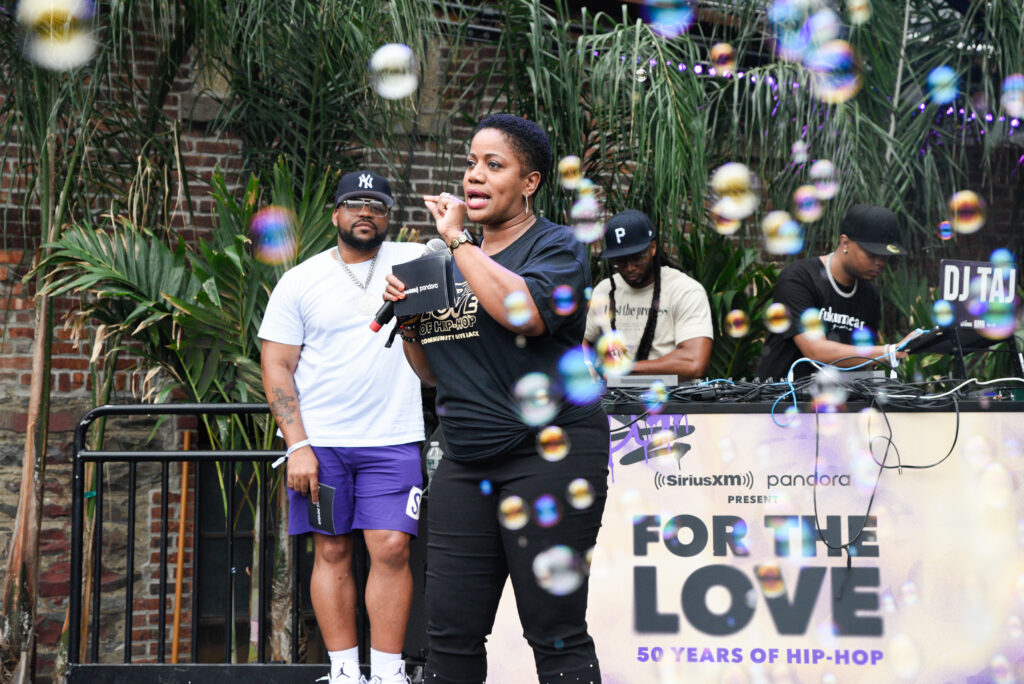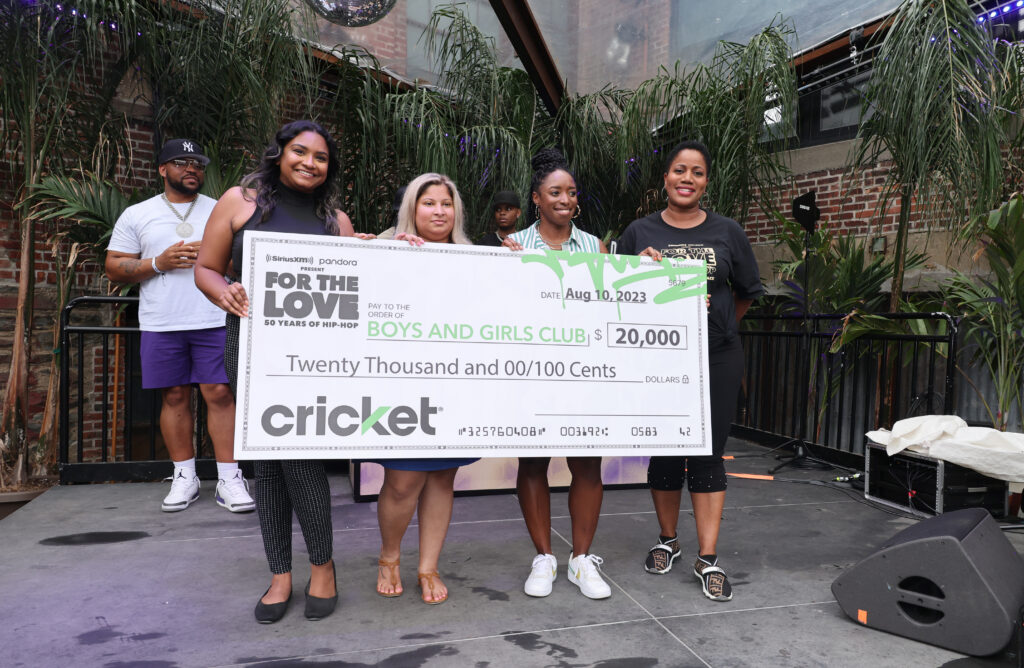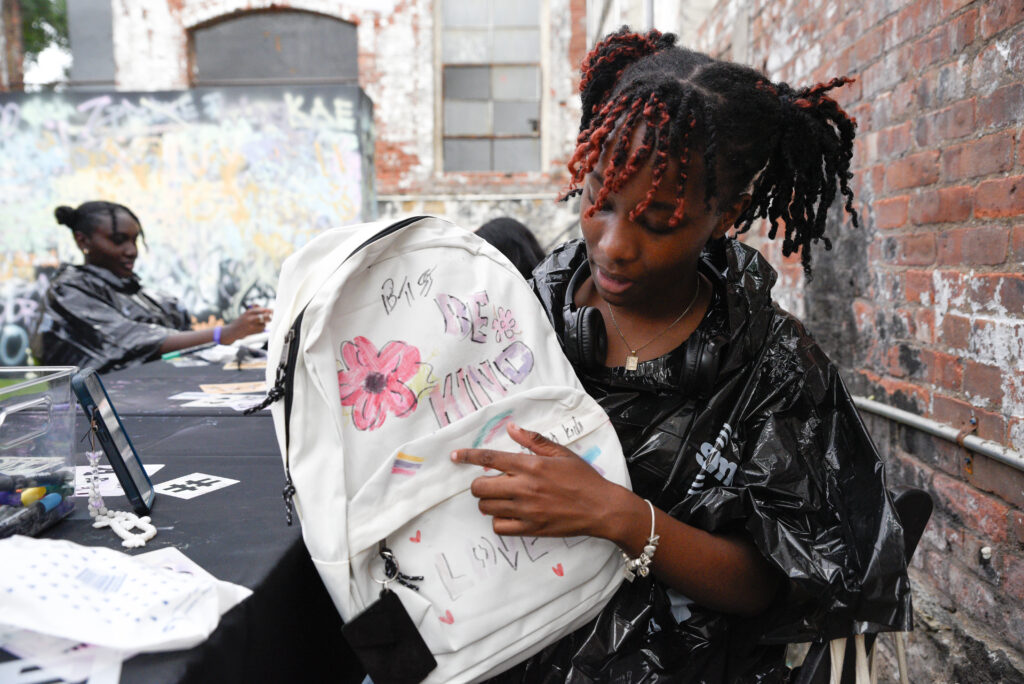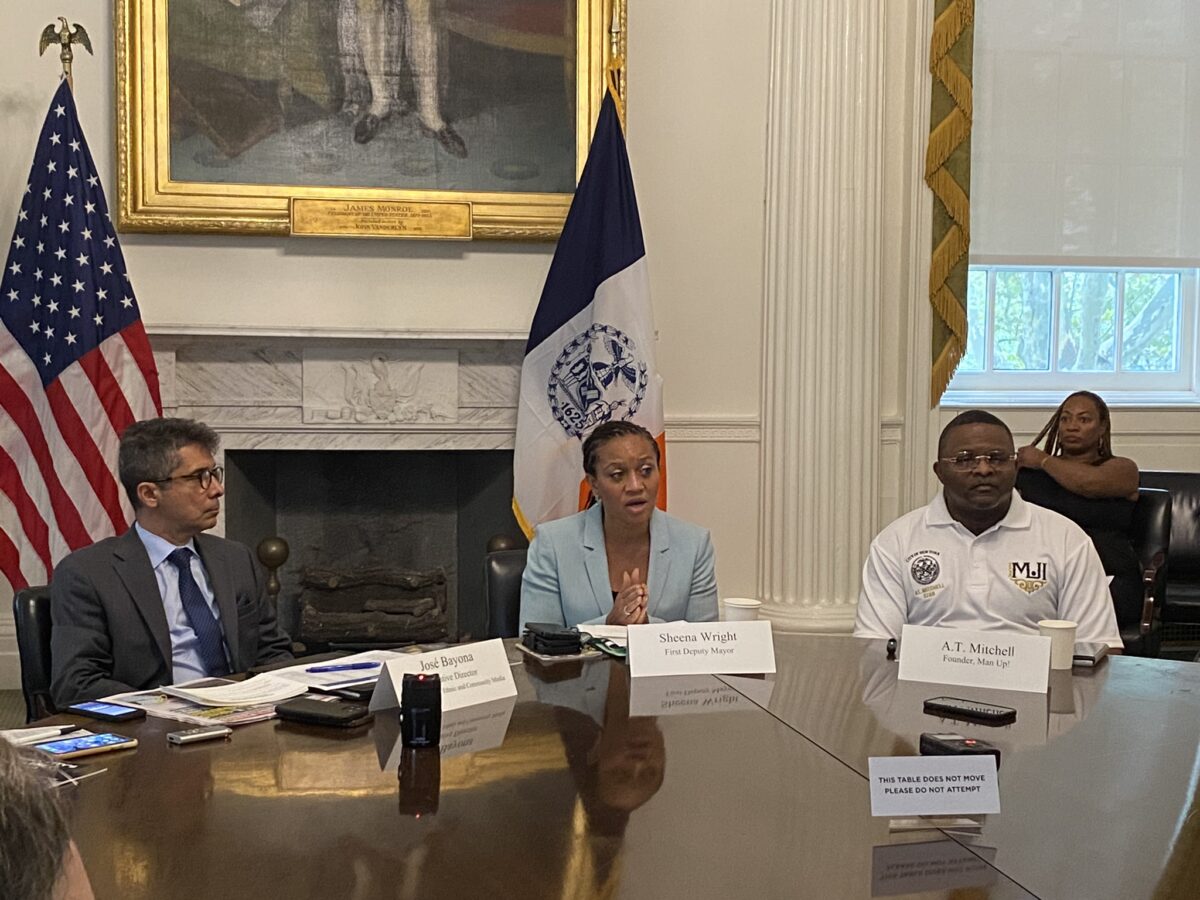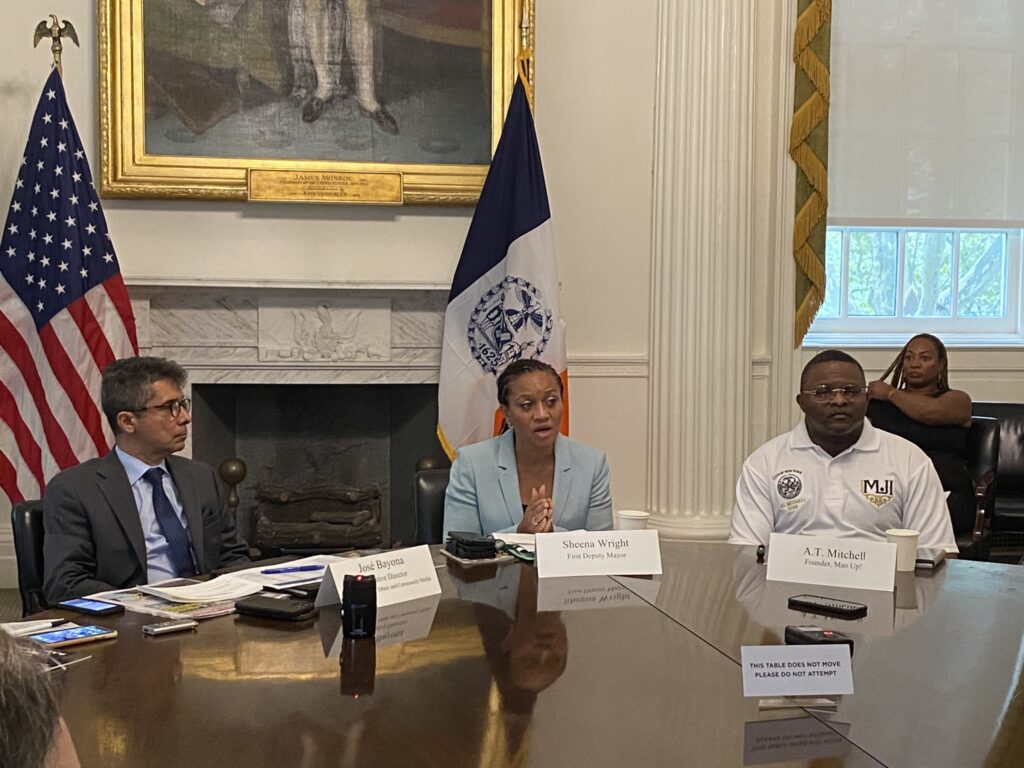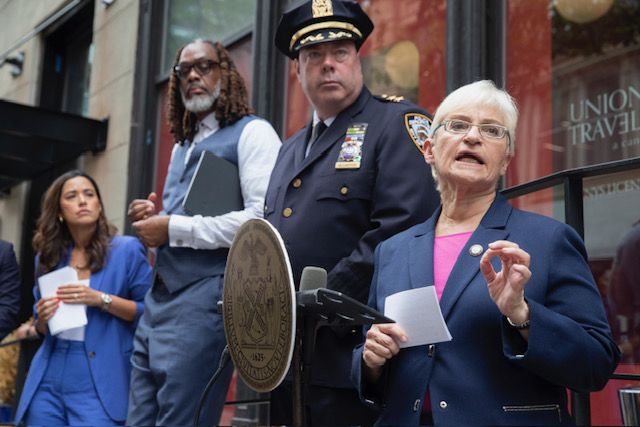Spiritual Center Regrounds in LIC
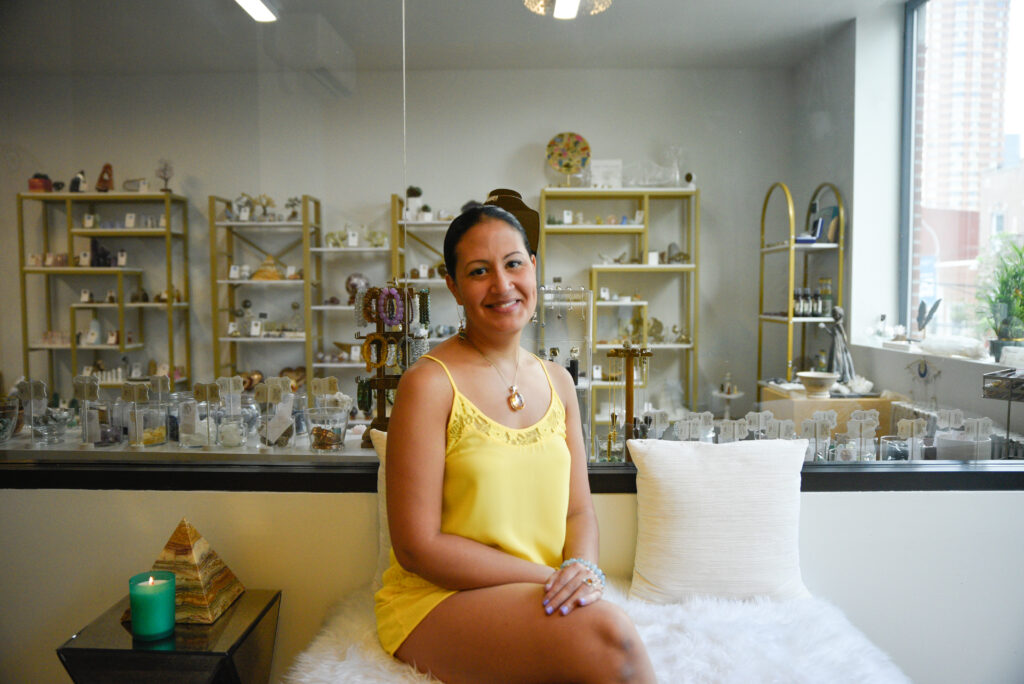
The owner of Earth Angel Crystal, Daisy Tamberino, is a certified reiki master, psychic medium and certified crystal practitioner. Photo by Iryna Shkurhan
By Iryna Shkurhan | ishkurhan@queensledger.com
On 50th Avenue in Long Island City, just off Vernon Boulevard, the smell of incense spills onto the sidewalk. At first you might think that a church is close by, but you’ll actually find the area’s first metaphysical healing center at the top of a towering flight of stairs.
The owner, Daisy Tamberino, envisioned the space as not just a spot to buy authentic crystals, but as a community center where anyone can walk in to recenter themselves away from the city’s chaos. Tucked away on the third floor of a century old brick building is Earth Angel Crystal.
Tamberino has been around crystals, and highly attuned to the spiritual world since she was a child. She is a fifth generation medium and energy healer whose connection to the mystical stems from her mother’s lineage. Throughout her childhood, her mother worked in a botanica, a ritual goods store stocked with oils, incense and herbs, that she describes as an old-school Spanish version of her current shop. She recounts hours just flying by as she basked in the energy of the space.
Born and raised in Manhattan, Tamberino is first generation immigrant and the first in her family to own a business. Her mother, who is retired, now works out of the shop one day a week giving tarot and psychic readings. Tamberino focuses more on mediumship, which she describes as the connection to loved ones on the other side through a higher realm.
“But it wasn’t until my reawakening that the crystals just helped transform my life and then working with my angels and my guides, the combination of them have led me here,” said Tamberino in an interview with the Queens Ledger out of her light filled shop. “This is really a journey with how they’ve guided me here.”
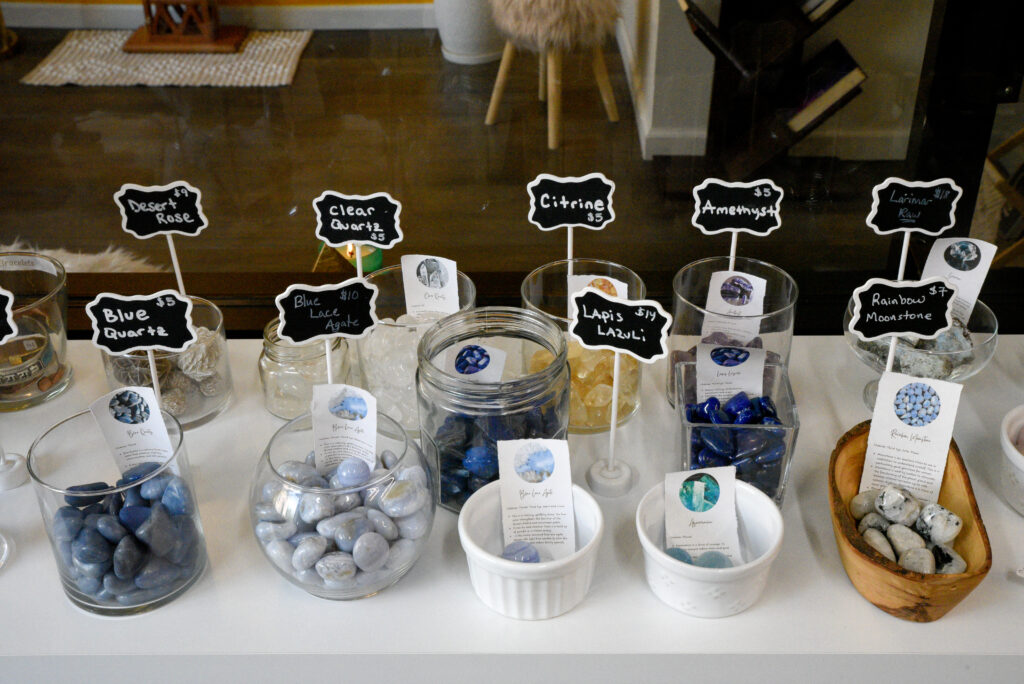
The shop has dozens of crystals on display that are ethically sourced from around the country and range from under ten dollars to a few hundred. Photo by Iryna Shkurhan
In 2010, Tamberino met her husband while salsa dancing and the couple ended up moving to Long Island to settle down in the suburbs. For 18 years, she also worked as an architect for a government agency that sent her traveling around the country, even to Puerto Rico, where her family is from. During projects where she would be designing courthouses and other government buildings she recalls bringing peace to male-only construction sites with rampant cursing.
During the pandemic, she experienced “the darkest night of my soul” where a feeling of lack lingered amid a growing death toll across the world. Despite the secure career and a house in the suburbs with kids she felt misaligned from a destiny that she glimpsed as a child – helping others in an energetic and spiritual way.
“My angel told me that I was going to sell my house, that I was going to move to Long Island City, that I would open my own business, and that I was going to have a healing center to help people,” recalls Tamberino. “And I sold my house two months later in two days.”
But before she moved into the current space, she spent a year renting out two rooms just down the street. And while space was tight, and it wasn’t necessarily what she envisioned, it was all she could afford at the time. But less than a year later, she had a nudge to inquire about a for rent sign posted across the street. Several nudges from her angels later, she secured a bigger and better space to expand her practice. She has been in her new center since May.
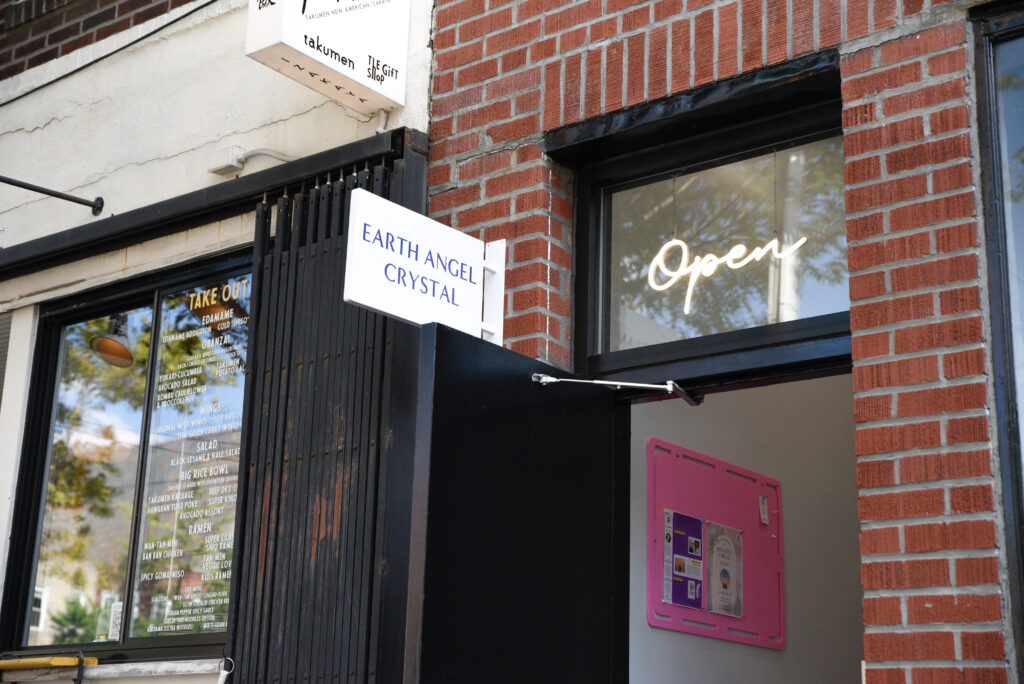
The new location is just down the block from where Tamberino has been practicing out of for the past year. Photo by Iryna Shkurhan
Tamberino continues to further settle into the LIC community by facilitating a space that locals can visit whether for an event, or just a solo meditation in the gold room. Last month she hosted a book reading by another medium, and later this month she will be hosting an Angel 101 workshop.
“I’m creating a space where people feel like they don’t even have to buy anything, just come to receive the peace that they need,” said Tamberino. “This isn’t private, only to select people, this is for everyone. I’m dedicating it to whoever needs it, it’s open. The doors are wide open.”



